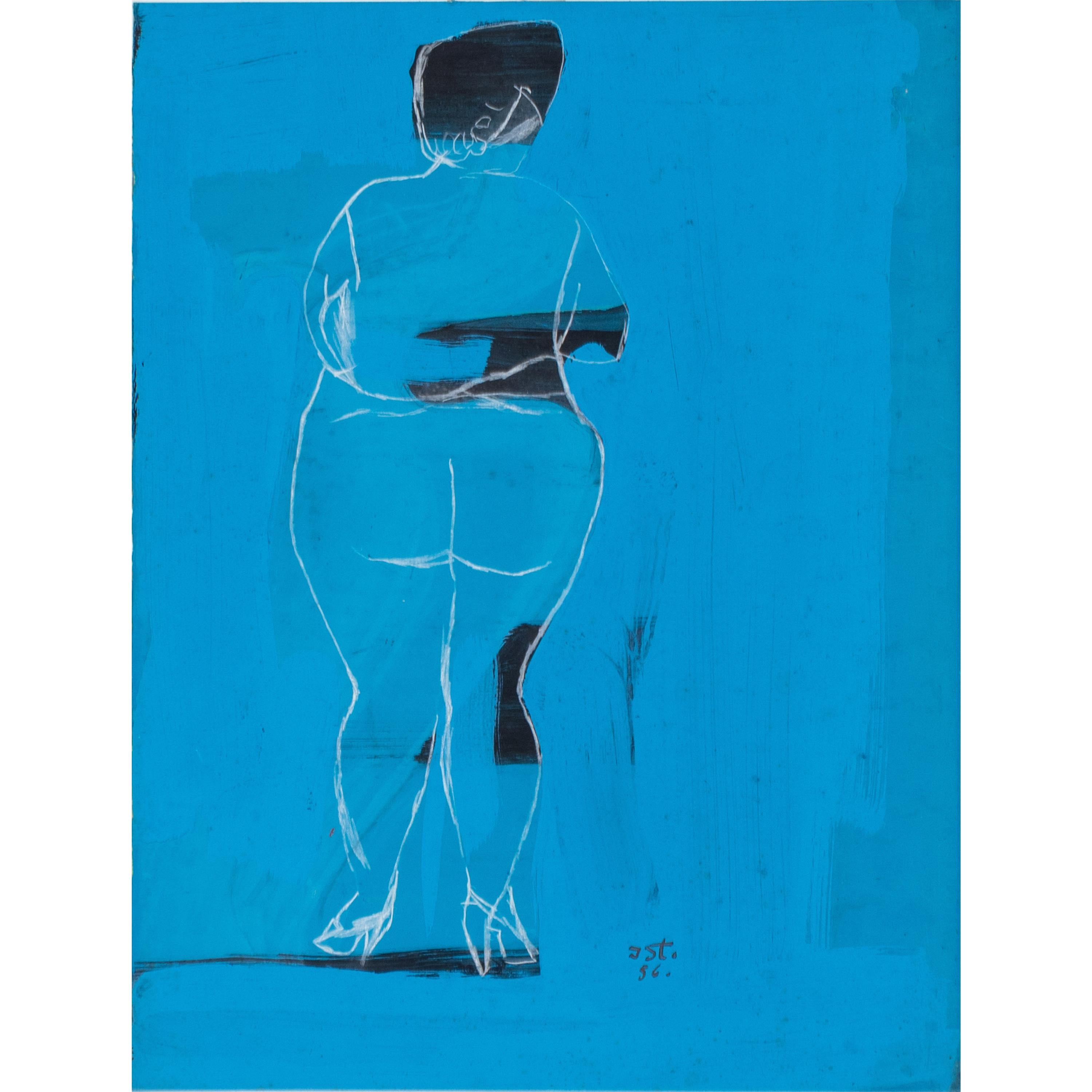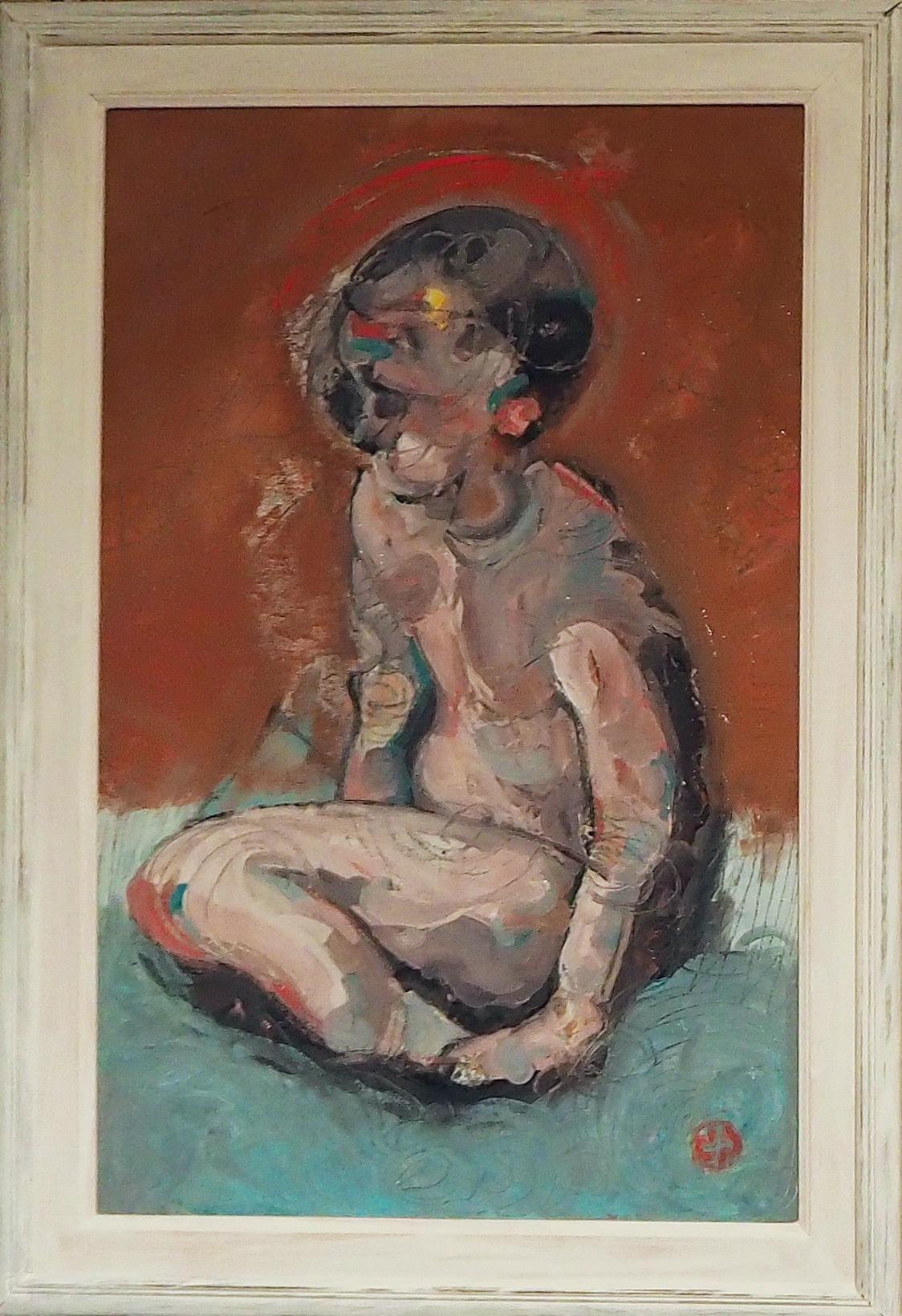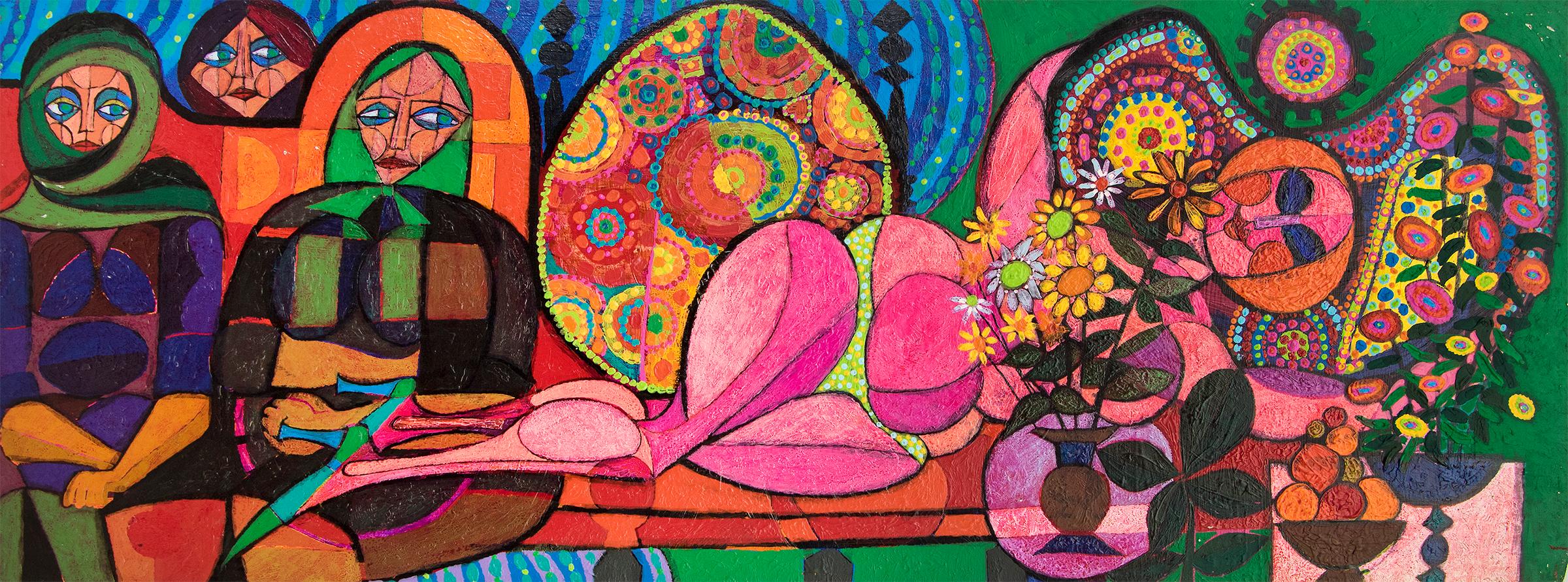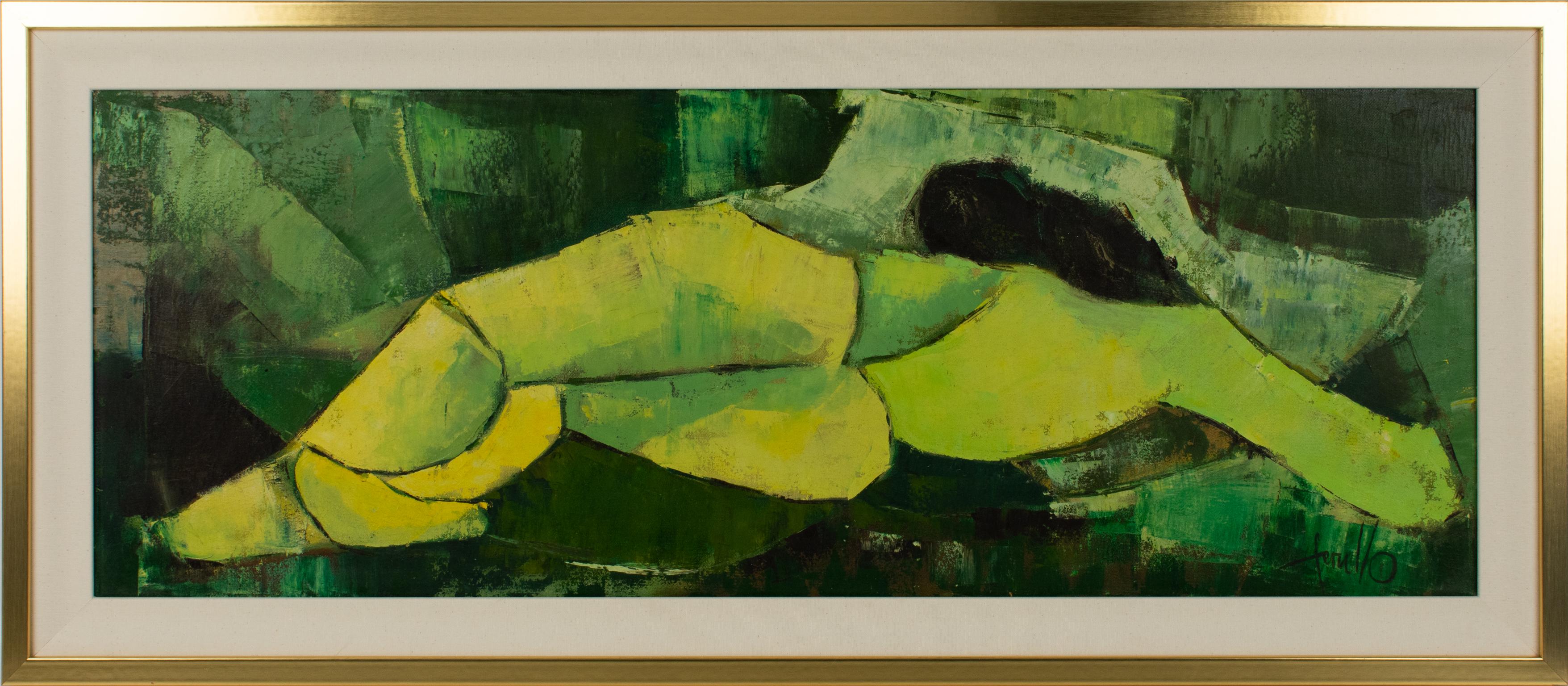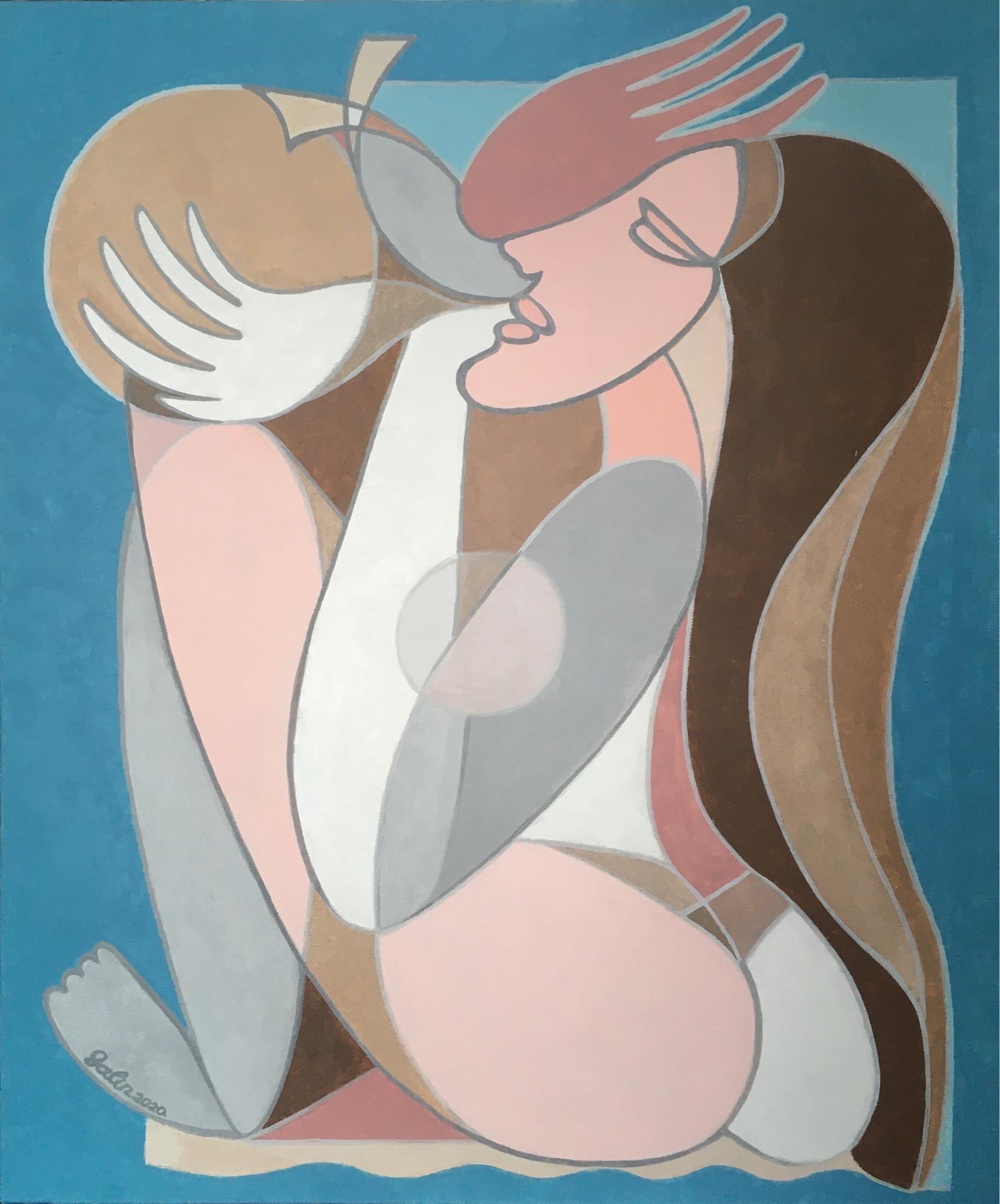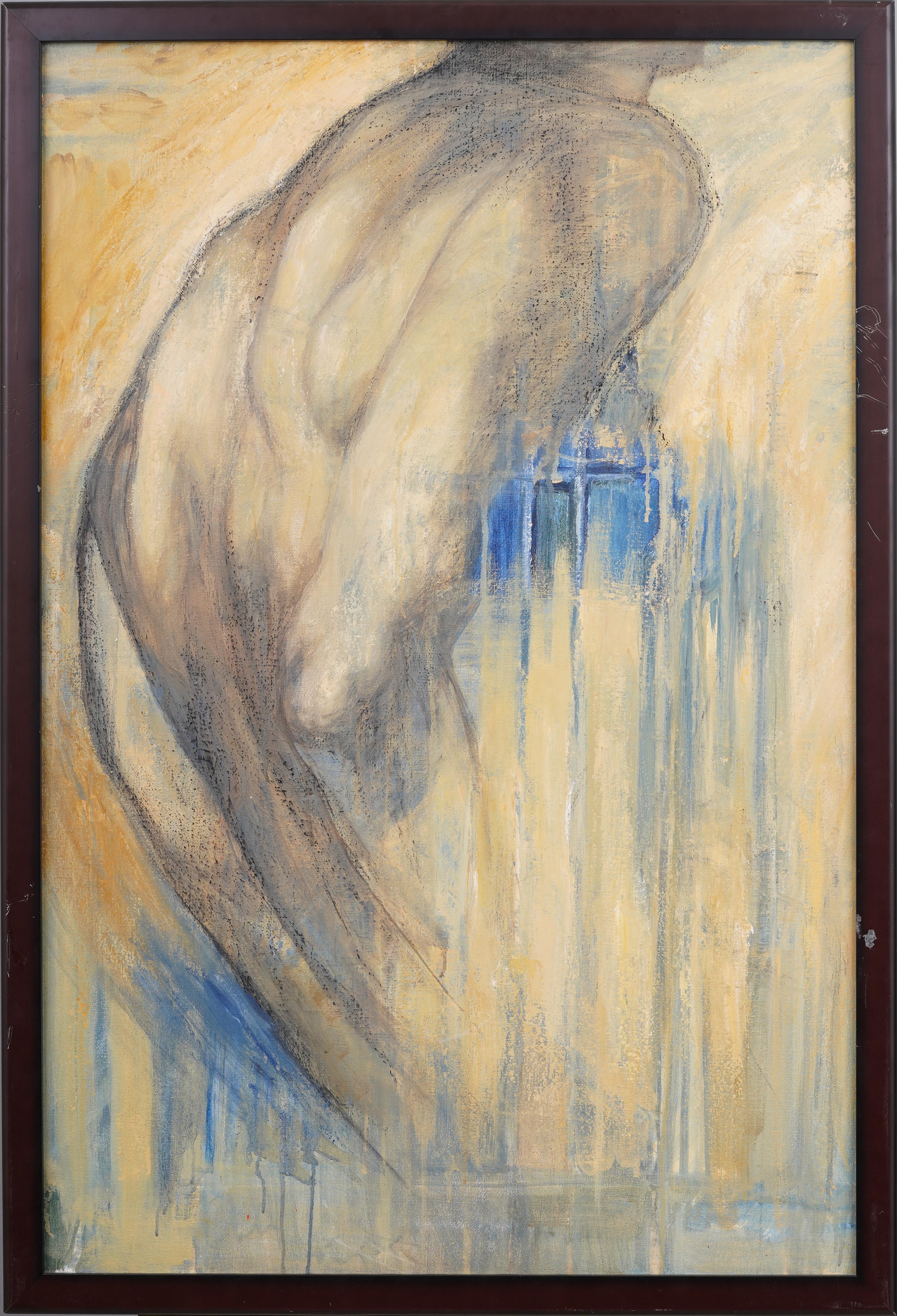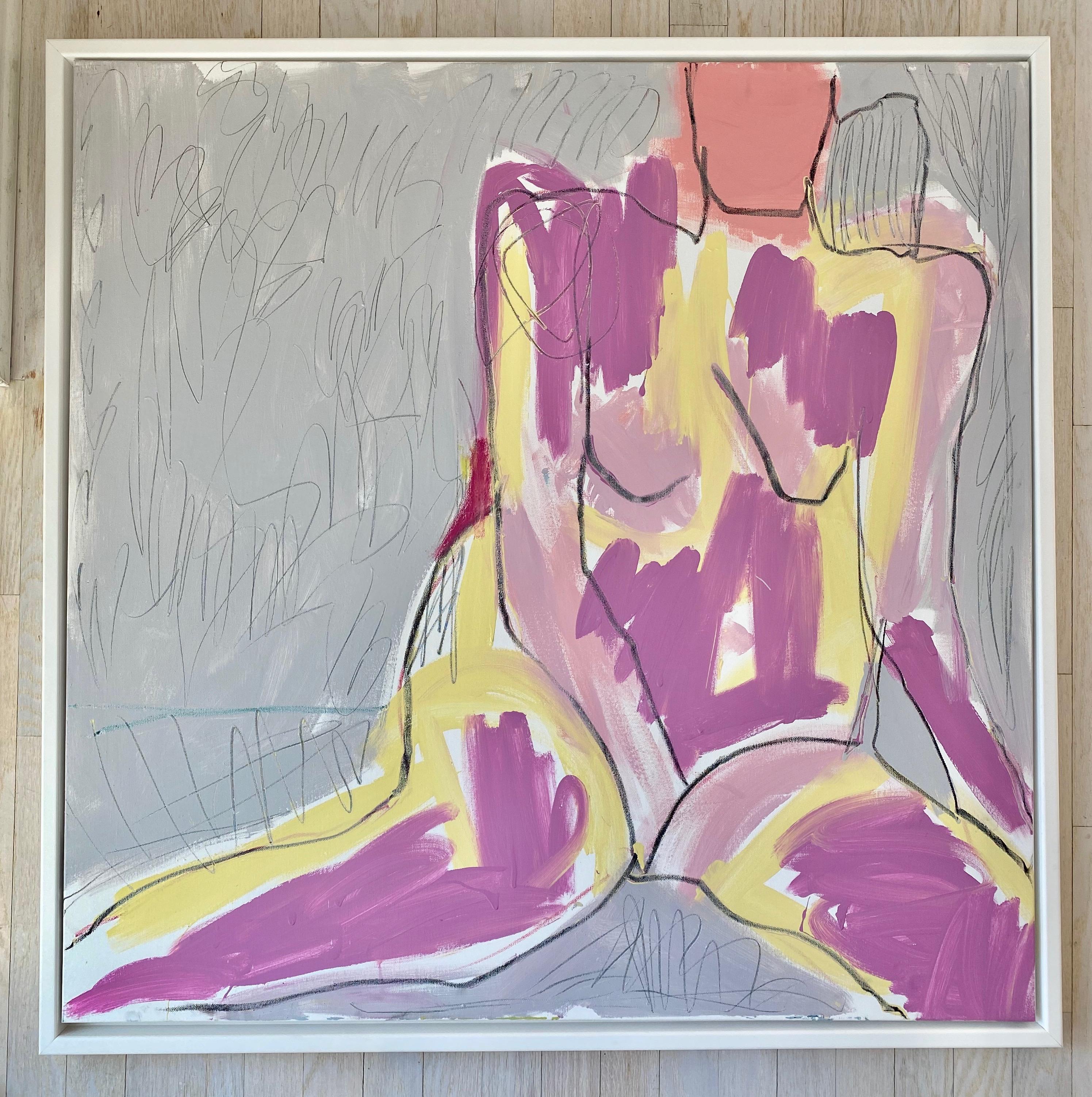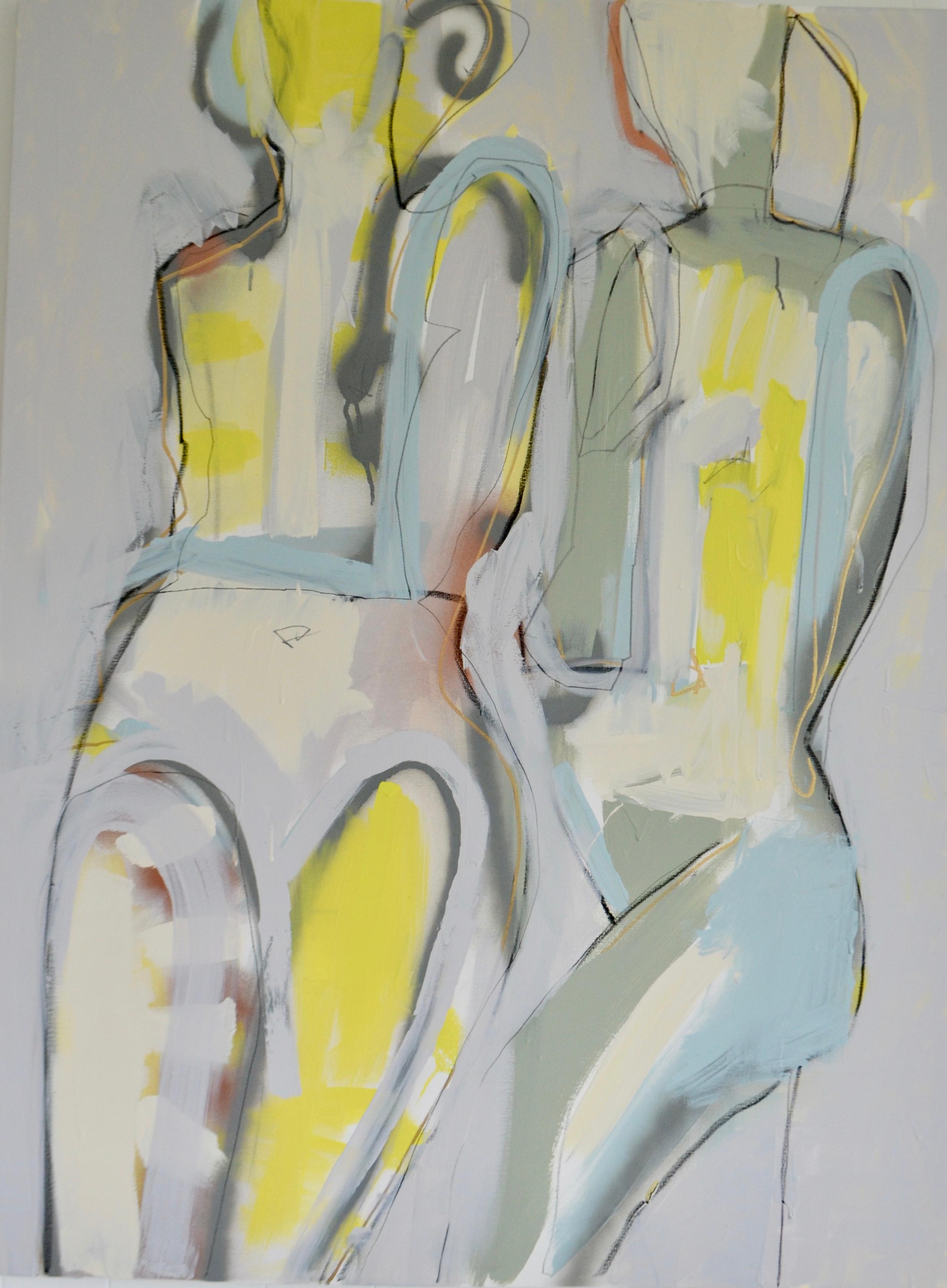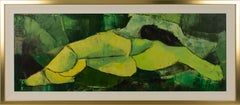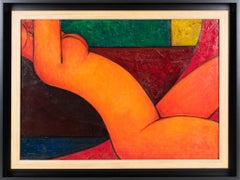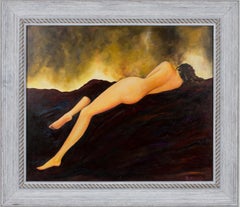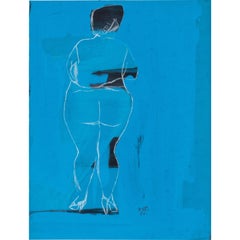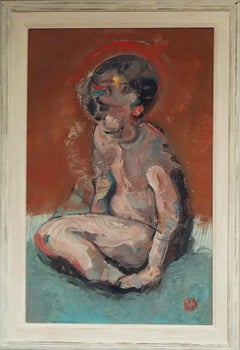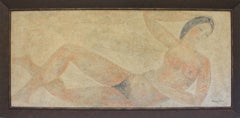
La Dame de Pompei Mix Media Painting by Raymond Dauphin
View Similar Items
Want more images or videos?
Request additional images or videos from the seller
1 of 20
Raymond DauphinLa Dame de Pompei Mix Media Painting by Raymond Dauphin1961
1961
About the Item
- Creator:Raymond Dauphin (French)
- Creation Year:1961
- Dimensions:Height: 30.71 in (78 cm)Width: 64.18 in (163 cm)Depth: 1.58 in (4 cm)
- Medium:
- Movement & Style:
- Period:
- Condition:A couple of tiny flea bites on edges of the frame, nothing obvious.
- Gallery Location:Atlanta, GA
- Reference Number:Seller: E3741stDibs: LU121226451082
About the Seller
5.0
Vetted Seller
These experienced sellers undergo a comprehensive evaluation by our team of in-house experts.
1stDibs seller since 2019
67 sales on 1stDibs
Typical response time: 3 hours
More From This SellerView All
- Mid Century Abstract Nude Oil on Canvas Painting by Edith FerulloBy Edith E. FerulloLocated in Atlanta, GAOriginal Mid-Century oil on canvas composition by American Artist Edith E. Ferullo (1928 - 2008). The painting features a thick textured abstract nude subject. The brutalist artwork ...Category
1960s Abstract Expressionist Abstract Paintings
MaterialsCanvas, Acrylic, Gouache
- Modern Orange Nude Oil on Canvas PaintingLocated in Atlanta, GAThis superb oil on canvas painting of a nude study is dated 1970 and signed lower left. We have not been able to decipher the artist's signature (please check the pictures for inform...Category
1970s Modern Nude Paintings
MaterialsCanvas, Oil
- Lying Nude Study Oil Painting by Robert RoujasLocated in Atlanta, GAThis charming oil painting on marouflé canvas was designed by Robert Roujas (1908-2000). This romantic composition presents a study of a reclining nude seen from behind in a weary po...Category
Mid-20th Century Romantic Nude Paintings
MaterialsCanvas, Oil, Board
- Female Nude Study Black Pencil Drawing by G. DebotoiycheLocated in Atlanta, GAStunning woman nude pencil study by Russian painter G. Debotoiyche (20th Century). The representation is very modernistic, with only a few lines drawn to render the whole movement an...Category
1920s Abstract Expressionist Nude Drawings and Watercolors
MaterialsPaper, Carbon Pencil
- Nude with Lace, Pastel Study Painting by Pio SantiniLocated in Atlanta, GAThis charming pastel painting on paper was designed by Pio Santini (1908-1986) and named: nude with lace. The artist's signature, Santini, can be found in the bottom left corner of the artwork. Lovely romantic composition with a nude young lady kneeling and holding a piece of white lace. Flamboyant magenta red drape background. The painting remains in its original frame, which features delicately carved wood, a gesso finish, an off-white wood liner, and glass protection. The piece is in good condition but has a dark stain and some small chips on the edges of the original wood frame. Measurements: With frame: 22.75 in. wide (58 cm) x 26 in. high (66 cm) Opening view: 14.50 in. wide (36.5 cm) x 17.75 in. (45 cm). Artist Biography: Pio Santini (1908-1986) Pio Santini was born on April 17, 1908, close to Rome, in Tivoli, Italy. He showed a precocious and pronounced artistic taste and gifts, to begin with, drawing and painting. From his childhood drawings, as early as 5 or 6 years old, he was gifted and had a technique above the average. As early as 1933, Pio Santini moved to Paris, in the Montparnasse district, also known as The Artists Area, where he settled in his first Parisian studio. He is recognized as a member of the Academy of Paris, a significant art movement in the first half of the 20th century, alongside Amedeo Modigliani and other Italian artists. While attending the classes of the Estienne School for further training in plastic art, Pio Santini started to attract attention in various Parisian Salons (particularly the Winter Salon, the Independents Salon, and the French Artists Salon) and to find a place in the Parisian universe of painting, as is shown in the press of the time. The Second World War, which pitted his country of birth against his adopted nation, created conflicting emotions in him. During this time, the concept of a united and reconciled Europe took root in his mind. In a way, he played a part in the resuming cultural exchanges between France and Italy by founding the association The Romans in Paris after the war, and especially by creating and animating the Villa D’Este Prize for about ten years, rewarding each year a French artist or writer by offering, a one month stay at the Villa, in Tivoli. Later, the Montparnasse Prize would reward Italian artists in Paris, in the same way. While devoting himself to painting, he worked as an art illustrator for edition and press and left us a rich but unrecognized work from this period. In the early 1960s, Pio Santini decided, imperiously and bravely, to live on his painting. A member of the Society of Independent Artists since 1934, he then actively participated in numerous collective exhibitions in France and abroad. He regularly exhibited in Parisian Salons, most of which he was a member: the Independents Salon, the Autumn Salon, the Winter Salon, the National Salon of the Fine Arts, and the Comparison Salon. A regular participant in the prestigious Salon des Artistes Français, he was often rewarded: Great Price of the Salon in 1970, then in 1974, a gold medal in 1971, and Prize-winner of the Ernest Marché Prize in 1974. Pio Santini lived his last years in his house in Garches, near Paris. He worked there until the last moment and died of illness at the age of 78. Keeping himself a part of the avant-garde of contemporary art, Pio Santini developed a personal work of formal coherence very steadily. He is a two-time artist, one of the beginnings of his career, the Thirties, and the other one, his rebirth, the Sixties, when the artist can again devote himself to painting. Between these two periods, the Second World War badly hit the pictorial growth of Pio Santini. However, everything had started under the best auspices for the young painter whose desire to devote himself to painting is evident in his self-portrait of 1928 as a manifesto. In the 1930s, following the revolutions of cubism, abstraction, and surrealism, figurative and sensual...Category
1940s Modern Portrait Paintings
MaterialsPaper, Pastel, Board
- Nude Women Bathers Pastel Painting by Catherine Bres-RhocangesBy Catherine Bres-RhocangesLocated in Atlanta, GAThis pastel painting by Catherine Bres-Rhocanges (1947 -) is titled "Group of Bathers" and signed on the bottom right corner "Bres-Rhocanges." Catherine Bres-Rhocanges paints women w...Category
Late 20th Century Modern Nude Paintings
MaterialsPastel
You May Also Like
- Josef Steiner (1899-1977), Abstract female nude, dated 1956By Josef SteinerLocated in Greding, DEAbstract female figure on a blue ground. Monogrammed and dated in the lower centre. Josef Steiner (1899 Munich - 1977 ibid.) lived through a Germany in all its facets as an artist. A...Category
20th Century Abstract Expressionist Nude Paintings
MaterialsOil, Cardboard
- Collection of Three French Oils on Board. "La Cagole, Redoutable & La Corrida".Located in Cotignac, FRLate 20th century collection of three abstract expressionist oils on board by French artist Emmanuelle Bardet. All signed to the front and each dated 1995 and titled to the reverse. The three paintings are titled; La Cagole...Category
Late 20th Century Abstract Expressionist Abstract Paintings
MaterialsOil, Board
- Political (body) Stance IIIBy Diogenis PapadopoulosLocated in Spetses, GRPapadopoulos challenges the abstract and the figurative in a whirlwind combination of colours that paint patterns of expression within the recognisable human form. Dimensions without...Category
21st Century and Contemporary Abstract Abstract Paintings
MaterialsOil, Board
- Diana and the Three Fates, Vintage 1970s Semi Abstract Figural Oil PaintingBy Edward MarecakLocated in Denver, CODiana and the Three Fates, vintage 1970s semi abstract oil painting on board by 20th century Denver artist, Edward Marecak (1919-1993). Female nude figure of the the Roman virgin goddess, Diana, the protector of childbirth reclining with vases of flowers and the Three Fates looking on. Semi abstract, cubist style painting in bright colors of pink, fuchsia, green, yellow, orange, blue, brown, purple and red. Unframed, custom framing is available. In situ photos are frame mocks ups, the piece is currently unframed. Painting is clean and in very good vintage condition - please contact us for a detailed condition report. Provenance: Estate of Edward Marecak Expedited and international shipping is available - please contact us for a quote. About the Artist: Born to immigrant parents from the Carpathian region in Slovakia, Marecak grew up with his family in the farming community of Bennett’s Corners, now part of the town of Brunswick, near Cleveland, Ohio. When he turned twelve, his family moved to a multi-ethnic neighborhood of Poles, Czechs, Slovaks and Slovenians in Cleveland. His childhood household cherished the customs and Slavic folk tales from the Old Country that later strongly influenced his work as a professional artist. During junior high he painted scenery for puppet shows of "Peter and the Wolf," awakening his interest in art. In his senior year in high school he did Cézanne-inspired watercolors of Ohio barns at seventy-five cents apiece for the National Youth Administration. They earned him a full scholarship to the Cleveland Institute of Art (1938-1942) where he studied with Henry George Keller whose work was included in the 1913 New York Armory Show. In 1940 Marecak also taught at the Museum School of the Cleveland Institute. Before being drafted into the military in 1942, he briefly attended the Cranbrook Academy of Art near Detroit, one of the nation’s leading graduate schools of art, architecture, and design. A center of innovative work in architecture, art and design with an educational approach built on a mentorship model, it has been home to some of the world’s most renowned designers and artists, including Eero Saarinen, Charles Eames, Daniel Libeskind and Harry Bertoia. Marecak’s studies at Cranbrook with painter Zoltan Sepeshy and sculptor Carl Milles were interrupted by U.S. army service in the Aleutian Islands during World War II. Following his military discharge, Marecak studied on the G.I. Bill at the Colorado Springs Fine Arts Center from 1946 to 1950, having previously met its director, Boardman Robinson, conducting a seminar in mural painting at the Cleveland Institute of Art. Although he did not work with Robinson at the Fine Arts Center, who had become quite ill - retiring in 1947 - he studied Robinson’s specialty of mural painting before leaving to briefly attend the Cranbrook Academy in 1947. That same year he returned to the Fine Arts Center, studying painting with Jean Charlot and Mary Chenoweth, and lithography with Lawrence Barrett with whom he produced some 132 images during 1948-49. At the Fine Arts Center he met his future wife, Donna Fortin, whom he married in 1947. Also a Midwesterner, she had taken night art courses at Hull House in Chicago, later studying at the Art Institute of Chicago with the encouragement of artist Edgar Britton. After World War II she studied with him from 1946 to 1949 at the Fine Arts Center. (He had moved to Colorado Springs to treat his tuberculosis.) Ed Marecak also became good friends with Britton, later collaborating with him on the design of large stained glass windows for a local church. In 1950-51 Marecak returned to the Cleveland Institute of Art to complete his Bachelor of Fine Arts degree. A year later he was invited to conduct a summer class at the University of Colorado in Boulder, confirming his interest in the teaching profession. In 1955 he received his teaching certificate from the University of Denver. Vance Kirkland, the head of its art department, helped him get a teaching job with the Denver Public Schools so that he and his family could remain in the Mile High City. For the next twenty-five years he taught art at Skinner, Grove, East, George Washington and Morey Junior High Schools. Prior to coming to Colorado, Marecak did watercolors resembling those of Winslow Homer, John Singer Sargent and Charles Burchfield. However, once in Colorado Springs he decided to destroy much of his earlier ouevre, embarking on a totally new direction unlike anything he had previously done. Initially, in the 1940s he was influenced by surrealist imagery and Paul Klee, and in the West by Indian petroglyphs and Kachinas. His first one-person show at the Garrett Gallery in Colorado Springs in 1949 featured paintings and lithographs rendered in the style of Magic Realism and referential abstraction. The pieces, including an oil Witch with Pink Dish...Category
1970s Abstract Abstract Paintings
MaterialsOil, Board
- The Feminine - Contemporary abstract monochrome painting in pastel brownLocated in London, GBSmall monochromatic abstract painting with a light texture. This abstract artwork is part of the process led Dreams And Wishes series. ...Category
2010s Abstract Abstract Paintings
MaterialsAcrylic, Gesso, Cotton Canvas, Ink
- "She" Mixed Media Abstract Gestural Woman Figure Painting on Canvas, 2011Located in Mantova, MNA colorful, but at the same time essential, balanced and elegant, modern composition, in this gestural mixed media abstraction of a human figure, a laying woman, by Italian contemporary artist Federica Aiello Pini...Category
2010s Abstract Nude Paintings
MaterialsOil Pastel, Pastel, Mixed Media, Acrylic
